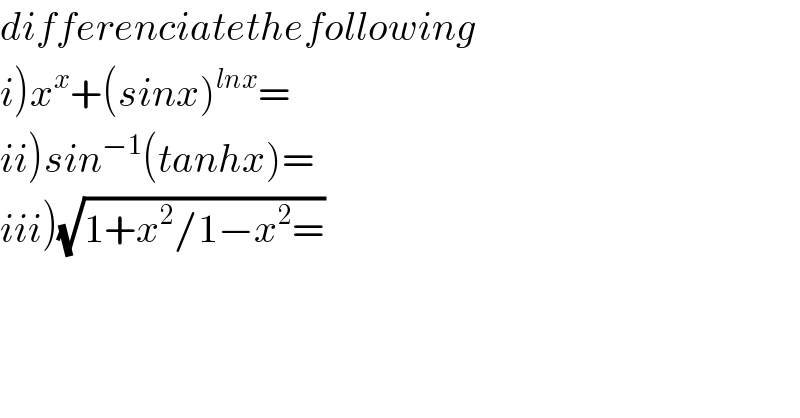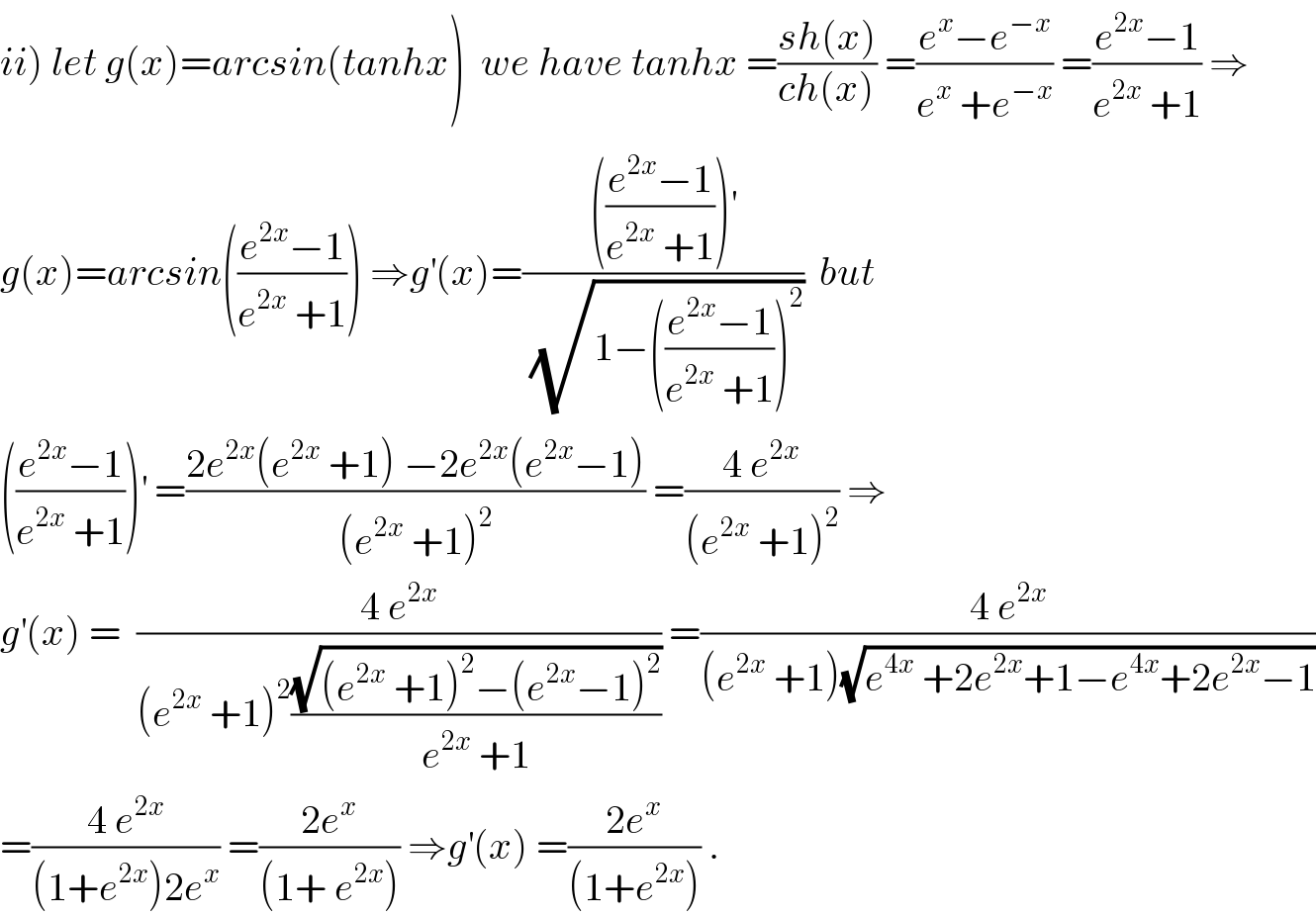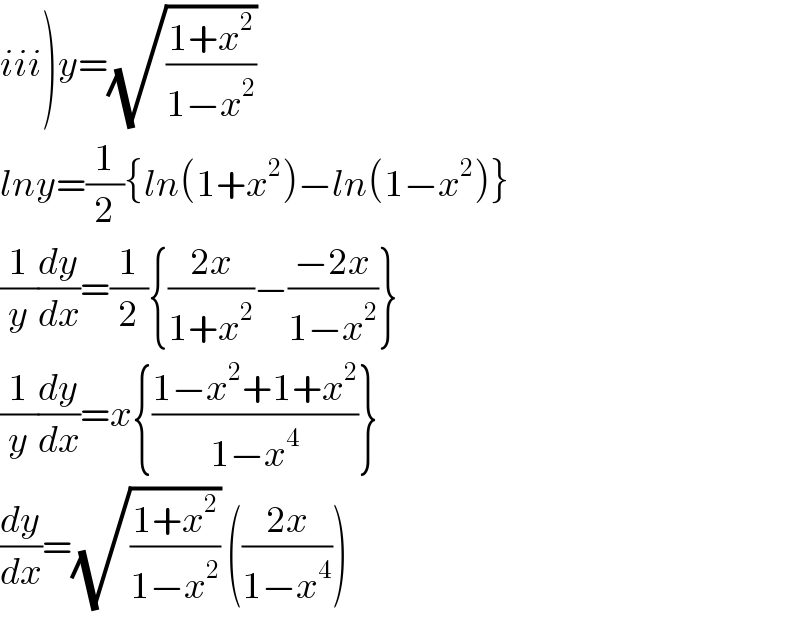
Question and Answers Forum
Question Number 54790 by Anju last updated on 11/Feb/19

Commented by maxmathsup by imad last updated on 11/Feb/19

Commented by maxmathsup by imad last updated on 11/Feb/19

Answered by tanmay.chaudhury50@gmail.com last updated on 11/Feb/19
![1)y=x^x +(sinx)^(lnx) y=u+v (dy/dx)=(du/dx)+(dv/dx) u=x^x lnu=xlnx (1/u)(du/dx)=x×(1/x)+lnx×1 (du/dx)=x^x (1+lnx) v=(sinx)^(lnx) lnv=lnxln(sinx) (1/v)×(dv/dx)=lnx×(1/(sinx))×cosx+ln(sinx)×(1/x) (dv/dx)=(sinx)^(lnx) [cotxlnx+((ln(sinx))/x)] so answer is (du/dx)+(dv/dx) =x^x (1+lnx)+(sinx)^(lnx) [cotxlnx+((ln(sinx))/x)]](Q54791.png)
Answered by tanmay.chaudhury50@gmail.com last updated on 11/Feb/19

Answered by tanmay.chaudhury50@gmail.com last updated on 11/Feb/19

